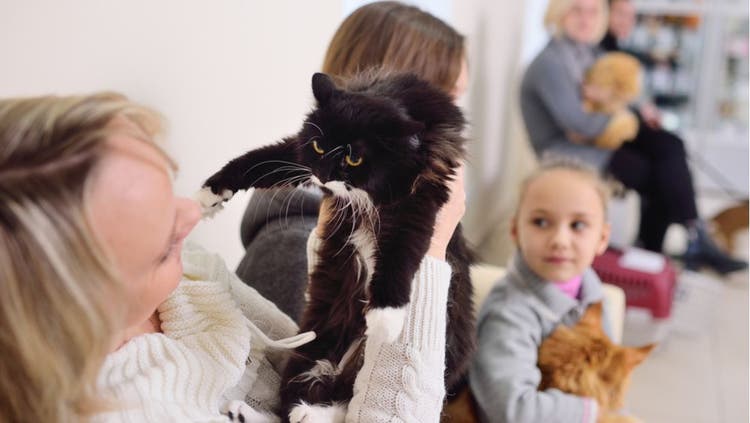
How Infectious Diseases Are Treated in a Veterinary Hospital
Veterinarian visits are nerve-racking for every pet parent, but they can be especially scary if your pet is diagnosed with a contagious disease. This article is designed to help understand infections, how they are handled in a veterinary hospital, and how to prevent other pets from being exposed.
Safety Precautions at Veterinary Hospitals
In veterinary medicine, we see many different animals with many different illnesses. Some of these illnesses can be highly contagious to other patients and, when an animal comes into the hospital with an infectious disease, staff does all it can to ensure the safety of every patient.
There are special precautions personnel take to safeguard patients. When a suspected contagious pet arrives at the hospital, they are placed in an examination room so that they will have limited contact with other animals in the lobby. Reception will contact the technician and doctor who will be attending to the patient and let them know that the animal in question may be contagious. In response, the technician and doctor will “gown up” in personal protective equipment (PPE), which includes a gown, gloves, booties, and, depending on the suspected contagion, a mask, cap, or eye coverage. PPE ensures that no infectious material gets on the clothing or hands of medical staff that might be transmitted to another patient. All staff members also wash their hands thoroughly after coming into contact with infectious patients.
Isolation of Contagious Pets
If a pet needs to be hospitalized, they are typically placed in an isolation ward. This is a section of the hospital that is separated from other patients to prevent contamination, and is commonly referred to as quarantine. Though this ward has similar equipment to the rest of the hospital, all materials are dedicated to the ward and easily disinfected. Also, many medical tools are metal or made to only be used once.
Though the name “Isolation Ward” makes it sound like the patient is in solitary confinement, they are never alone. There is a dedicated technician whose occupational goal is to make sure the patients in the isolation ward are doing well and not lonely. This technician helps the doctor examine all the patients in the ward, assists with all treatments, feeds patients, cleans their cages, and gives them all the attention they need. Patients in the isolation ward are often very sick, and many need feeding tubes or special catheters. It is the isolation technician’s job to make sure that these special devices are clean and fully operational. The technician also has open communication with the doctor throughout the day to keep them updated on the status of their patients.
People allowed into the isolation ward are restricted to the isolation technicians, assistants, and doctors. These limitations reduce the chance that infectious pathogens will travel throughout the hospital. Any person who goes into an isolation ward must wear PPE. If an owner visits their pet in the isolation ward, the technician will explain protocol to them and show them the appropriate way to put on and take off their PPE. This protects animals the owner may come into contact with after visiting their pet, including any housemates.
Discharge from the Hospital for Pets with Infectious Diseases
When it’s time for a patient to go home from the isolation ward, their doctor will likely give the owner special instructions. Depending on the disease, the pet may still need medication or need to be kept away from other animals for a period of time. Pet parents will be instructed on any signs that may indicate that their pet is having a relapse. The doctor and technician will provide information on cleaning up after a sick pet, which will help to keep other animals in the household and neighborhood safe.
The isolation ward is thoroughly cleaned once an animal is discharged. Special disinfectants designed to be virucidal and bactericidal (which kill viruses and bacteria) are used. Many of these are made specifically for veterinary hospitals and have been thoroughly tested on common viruses. All trash is double bagged and disposed of outside of the hospital in proper containers. Any laundry is washed with bleach to ensure all infectious material is destroyed.
Contagious animals are not uncommon in a veterinary hospital. The staff’s attention to detail, compassion, and commitment to cleanliness help patients get better and protect other patients from potential infection.